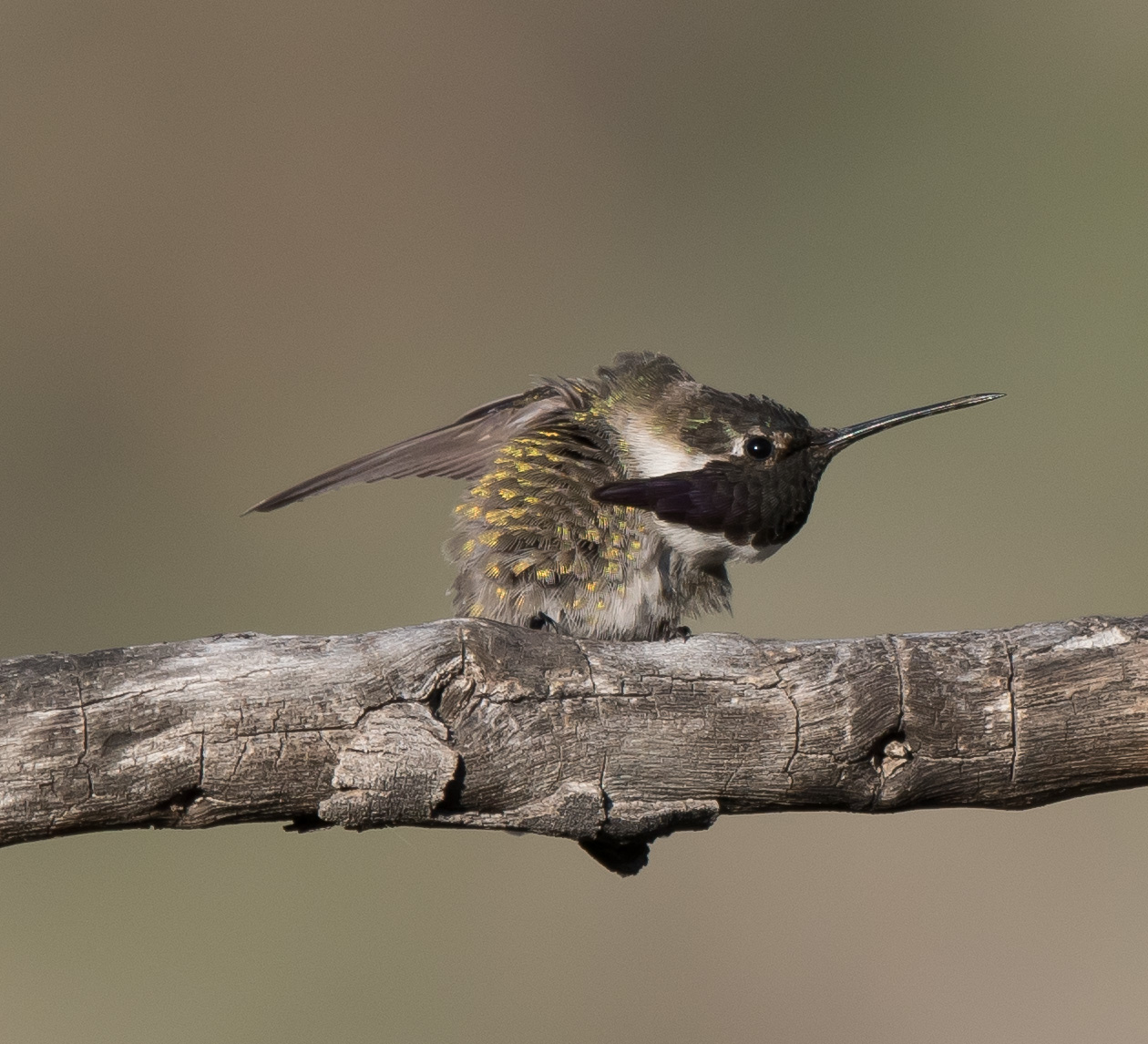It was great to return to Arizona after the rainy weather in the Pacific Northwest. Oregon and Washington definitely have some great birds that cannot be found in Arizona and have even more that I was not able to add to my life list. However, Arizona just happens to be an awesome state for birds and one never knows what might show up. Such was the case of a White Wagtail that was discovered at the small southern Arizona town of Ajo. Some sharp birders had found it on one of the 2 small sewage ponds that are enclosed by a chain link fence. This species had only been reported once before in the state of Arizona back in 1985 in the Grand Canyon area. In the United States, this Eurasian species breeds in western Alaska and most generally spends its winters in Southeast Asia. They do show up on occasion in the United States, but are more common on the west coast and are usually near water. To have one show up in Arizona is just plain weird. But there it was and since Ajo is only about 2 hours away, I took off to look for it the day it was reported. When I arrived, I was not disappointed and neither were the rest of the birders that had beat me to the location. The only disappointment was that it favored the back pond and the best views were with a scope set up in the back of a pickup. But long distance photos are better than none when it come to adding a new life bird to my list!
White Wagtail
Guess I am not the only 'bird nerd'. Rarities can draw a crowd!
Tufted Flycatcher
Buff-breasted Flycatcher
Mylitta Crescent
Echo Azure
Empress Leilia
Western Diamondback Rattlesnake
White Wagtail
But even without these extreme rarities, Arizona has some species of birds that are hard to find in the rest of the US and are limited to very small isolated spots in Arizona. In 2015, a pair of Tufted Flycatchers were found in Ramsey Canyon of the Huachuca Mountains and I joined forces with 3 other friends to search for this bird and we found it which made it a lifer for me at that time. This year, not only are there reports from Ramsey Canyon again, making it 3 years in a row for this bird in Arizona, but another pair was discovered higher up in elevation at the Carr Canyon Reef Campsite. So this year, I joined up with Barb Meding and we headed up the winding, twisting road filled with many switchbacks with some narrow sections and drop offs to the campsite. This time the views were incredible and this bird was generally very accommodating to us. This is another amazing bird for Arizona.
While we were enjoying the Tufted Flycatcher the Buff-breasted Flycatchers were everywhere and very vocal as well. This is a bird that can usually only be reliably be found in Arizona in the United States, although some can also be found in the Big Bend area of Texas. So the Buff-breasted Flycatcher is another great bird for Arizona and there is no doubt that it is my most favorite of all the Empxidonax flycatchers that can be found in the United States.
Yellow-eyed Juncos were also quite common at the campsite. They are a bird of the higher elevations in the Sky Islands of the southwest.
Yellow-eyed Junco
A very relaxing stop at Ash Canyon B & B, gave us great looks of many birds including several stunning male Scott's Orioles.
Scott's Oriole
Some butterflies that we enjoyed included a Mylitta Crescent, which was a new species for me and a Gulf Fritillary, both of which are pretty good looking if you ask me.
Gulf Fritillary
A few hikes near home gave me some more butterflies and some cool reptiles.
Checkered White
Marine Blue
Empress Leilia
Western Diamondback Rattlesnake
Western Patch-nosed Snake
The natural world is full of some amazing and awesome creatures and being able to observe so much of it in the amazing state of Arizona is a blessing. It truly is an amazing place and hopefully it will continue to be amazing. I do have concerns with what the future holds with climate change taking place and what politics might do to the nature around us. Hopefully a 'wall' will not be built that will isolate and fragment some of our natural resources and flora and fauna. Wall will isolate populations of animals for gene pool diversity and will also cut off some from their water and/or food sources. Lets hope that mankind can prevail and help preserve this natural world around us.





















No comments:
Post a Comment